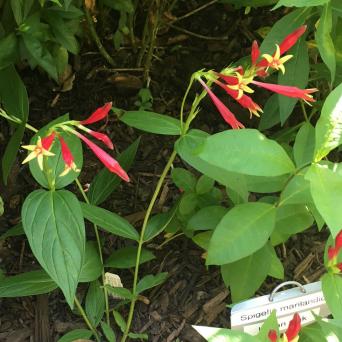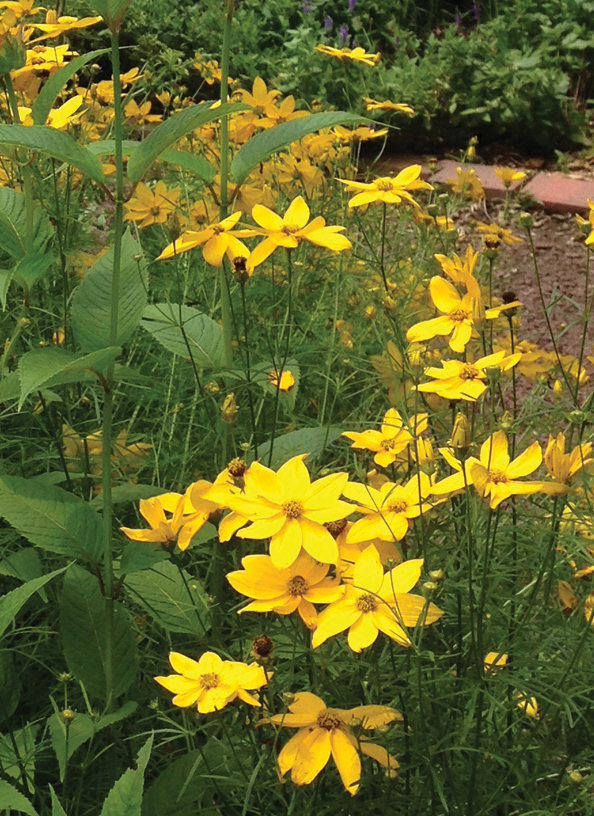
Hummingbirds See Red but Bees Can’t Be Bothered

This is the ninth June that I have volunteered at the Penn State Demonstration Pollinator Garden at the Horticulture Center in West Fairmount Park. But every year brings something new, and my new favorite flower is Indian pink, Spigelia marilandica.
I actually discovered this plant at Morris Arboretum, where it flourishes in moist shade next to the log cabin. It grows to about 15 inches tall, with a five-petaled star-shaped upward-facing yellow flower that emerges from a bright-red trumpet. Its genus name honors Adrian van der Spiegel (1578-1625), a professor of anatomy at Padua, Italy. “Marilandica” refers to the state of Maryland, but it is native all over the Southeast.
Mt. Cuba in Hockessin, DE, has scads of Spigelia. A visit there in June is well worth it. The DuPont family spared no expense in developing Mt. Cuba to highlight native plants.
Spigelia marilandica (love the name) is also supposed to attract hummingbirds. Frankly, the hummingbirds at the Pollinator Garden seem very content with the large red-flowered native honeysuckle, Lonicera sempervirens, that, if it is warm enough in March (not this year), will bloom from March through early November. The hummers also like the red beebalm, Monarda didyma. These three red flowers are the only true red ones in the Pollinator Garden. Bees do not see red and therefore do not go to these red flowers, but they are very, very busy on a variety of other flowers that bloom in June.
The yellow ones are tickseed (Coreopsis verticillata), the tall oxeye sunflower (Helianthemum helianthoides) and St. John’s wort (Hypericum frondosum), a small shrub. For white, there is beardtongue (Penstemon digitalis). The leaves on our “Husker Red” cultivar emerge with a distinct red/purple hue and become dark green after flowering. Two kinds of milkweeds bloom from mid to late June: the mauve-flowered common milkweed (Asclepias syriaca) and butterfly weed (Asclepias tuberosa), which has bright orange flowers. Of course, this is when the monarch butterflies lay their eggs on the milkweeds.
Finally the purple flowers that both bees and butterflies visit include Stokes aster (Stokesia laevis), which is a very short border plant; purple coneflower, (Echinacea purpurea) and purple vervain (Verbena bonariensis), which has small flowers on tall stems and is very airy in its appearance.
The pollinator garden is located just up the hill from the Japanese House at the Horticulture Center near Belmont Avenue and Montgomery Drive. A detailed plant brochure is available at the garden.
Weavers Way Working Member Howard Goldstein chairs the Penn State Master Gardener Pollinator Garden at the Horticulture Center in West Fairmount Park. Reach him at howpau2@yahoo.com or philadelphiamg@psu.edu.

